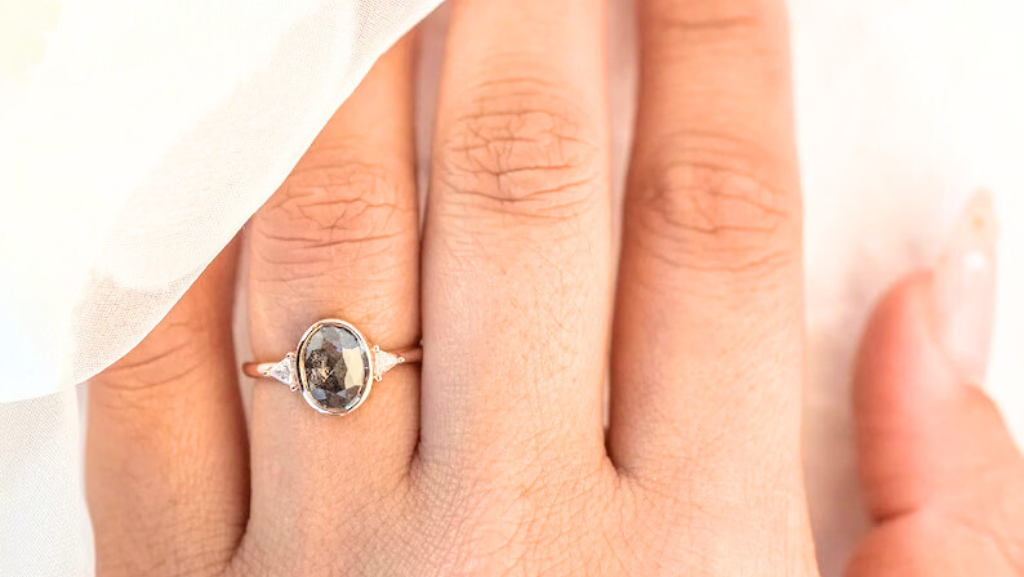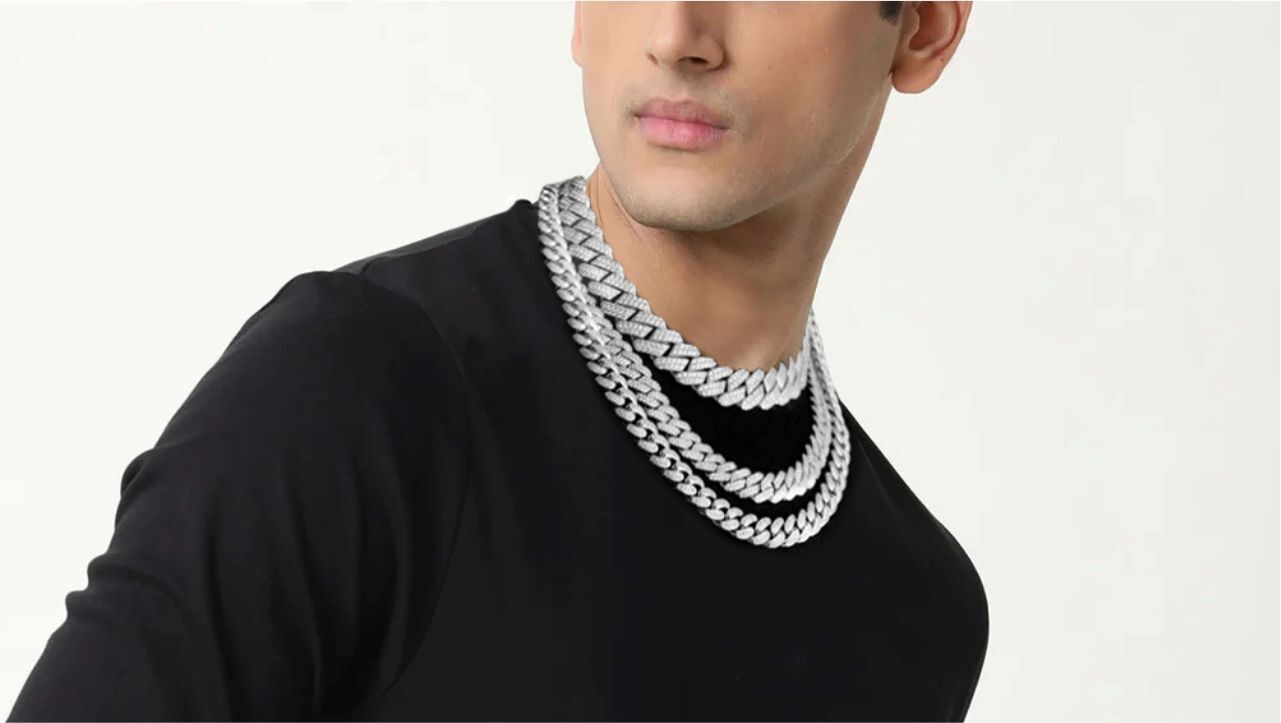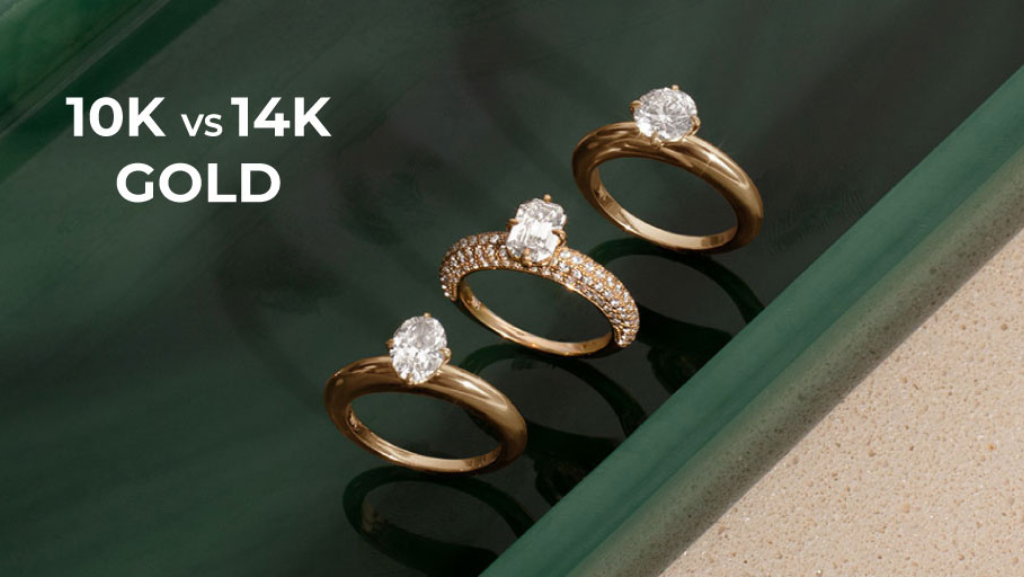
You’ve probably noticed that there are several varieties of gold to pick from if you’re looking for a ring, necklace, earrings, or other gold jewelry.
Most engagement rings are crafted out of 14-carat (14K) gold and some less expensive rings are frequently crafted with 10K gold. To assist you in selecting the best alternative for your preferences, requirements, and budget, we have outlined the distinctions between 10K and 14K gold below.
What is 10K Gold?
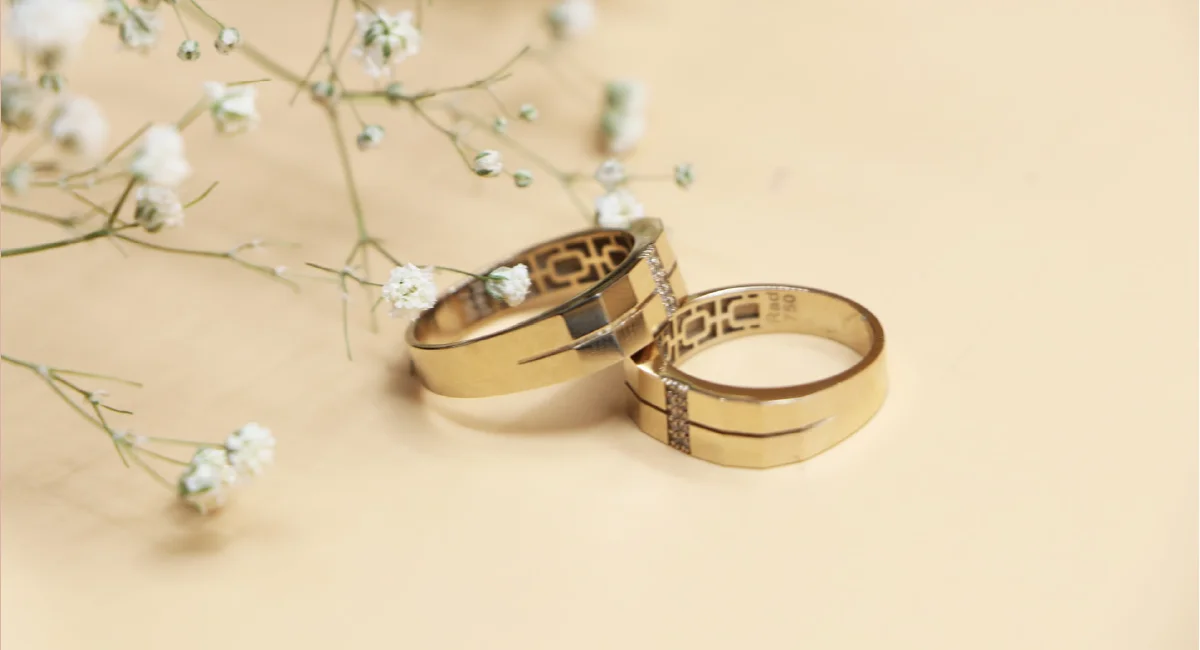
The terms 10K or ten karats may sound unfamiliar to someone who is not very familiar with gold jewelry. But it’s only a declaration outlining the purity of the gold.
10k pure gold is an excellent choice for custom gold Grillz. The gold content increases with the K number. 41.7% of 10K gold is pure gold (10 parts gold and 14 parts alloy).
Alloy refers to a combination of various metals. The alloy metal makes the gold strong, resilient, and excellent for jewelry for the mouth. However, 10K gold Grillz can tarnish more quickly than other, purer types of gold due to the high percentage of mixed alloy with the gold. But don’t worry, you can promptly remove the tarnish off real gold with a jewelry polishing cloth.
What is 14K Gold?
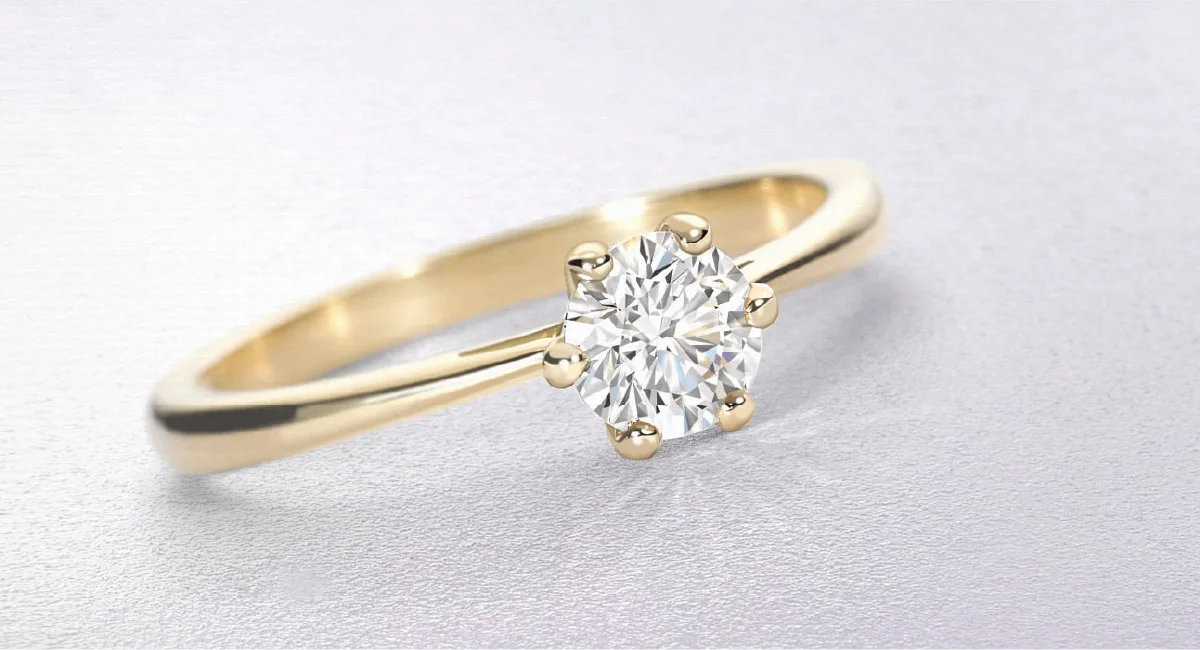
14K gold, often known as 14 karats or 14-carat gold, is genuine, solid gold jewelry. It indicates that the mixture has 58.3% pure gold, with the remaining metals being alloys. In the case of fine jewelry, 14K gold is composed of 7 parts gold and 17 parts silver, and optionally copper, nickel, and zinc.
The gold is stronger and more oxidation-resistant than 10 carats because of the higher K number. The price is more than 10K for gold with better purity, such as 14K. However, because 14K gold is less prone to tarnishing, it needs less upkeep and attention. The more gold an alloy contains, the better because moisture tarnishes the alloy in actual gold.
Due to the higher percentage of pure gold in 14K than in 10K, it is another factor to consider. Because of this, 14K gold Grillz are an excellent choice for mouth jewelry.
What are the Major and Specific Differences Between 10K and 14K Gold?
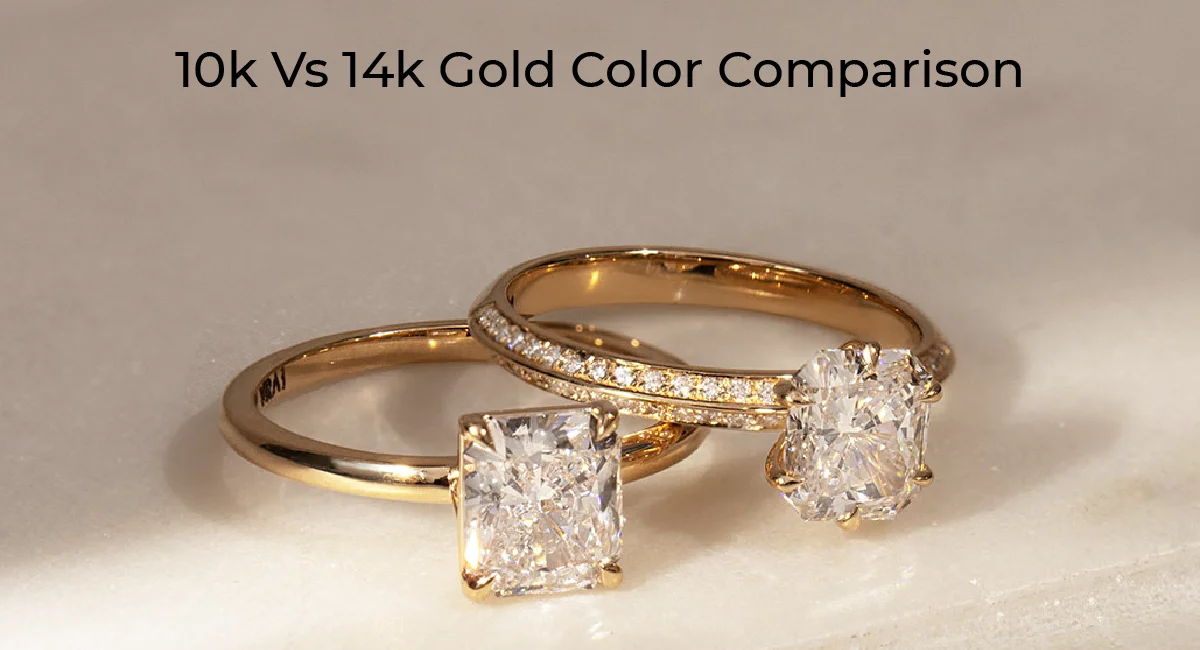
There are, of course, certain variations between 10k and 14k gold, even though they are “gold.”
Color
Compared to 10k gold, 14k gold contains a slightly higher percentage of pure gold, giving it a deeper yellow color.
Because there are more gold pigments, even if the 10k is still yellow, it appears much lighter overall. Consequently, there won’t be much color difference between white gold and other metals.
Durability
As you predicted from our earlier point regarding 24-carat gold, the softer the metal gets as you increase the karat number.
Here, 10k gold takes the lead since it is the most durable of all the gold karats due to its lower percentage. However, 14k gold is still regarded as having a higher quality gold look and an exceptionally durable alloy.
Price
No matter which karat you select, gold is often more expensive. The purer the gold, the higher this price point climbs, so 14k gold will cost more than 10k gold. Due to its affordability, 10k gold has grown in popularity.
Sensitive skin
Generally speaking, you are less likely to encounter any skin reaction the purer the gold %. A higher proportion of 14k gold is pure gold.
Therefore, it shouldn’t result in any skin rashes. However, 10k gold is frequently combined with nickel, which, depending on the person, may cause skin discomfort. Though you’re less prone to experience skin problems, you should still exercise caution if you have any allergies or sensitivities because 14k still includes nickel and other metals.
You should use higher-karat gold if you have sensitive skin, and if you get any itching or discomfort while wearing your jewelry, you should consult a doctor.
Pros and Cons of 10k vs 14k Gold Grillz
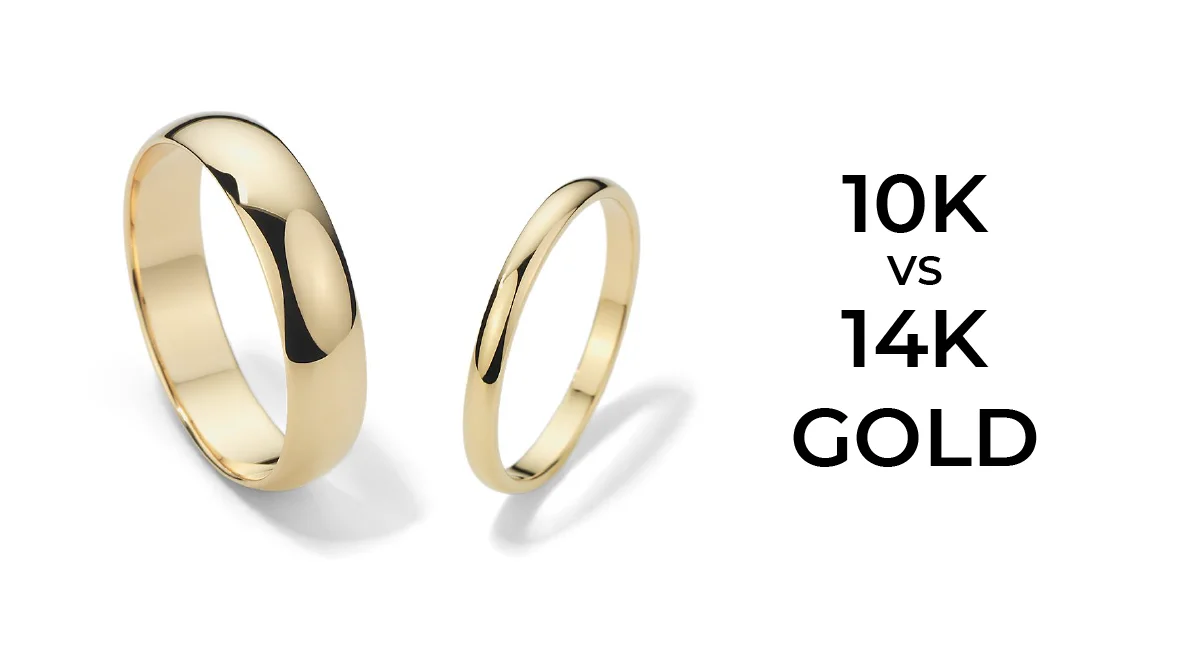
10K Gold
Pros:
The price of 10K gold is by far its most significant benefit. A jewelry made of 10K gold typically costs less than 14K gold since it is less pure.
In addition to being less expensive, 10K gold is more resilient than 14K gold. This gold is more resistant to scratches, scuffs, dents, and other typical damage because it contains less pure gold and more sturdy alloy metals.
Cons:
The main drawback of 10K gold is its low degree of purity. Only 41.7% of 10K gold is pure gold, meaning less than half of the ingredients used to make it are pure gold.
Due to its lower purity than 14K gold, 10K gold has a less appealing appearance. While most people think of gold as having a warm, rich tone, 10K gold can sometimes have a washed-out, lifeless appearance.
Due to its poor purity, jewelry manufactured of 10K gold is more prone to cause metal allergies than 14K gold jewelry. If your intended partner is allergic to nickel or another alloy metal used in gold, this could be an issue.
Finally, because 10K gold is so inexpensive, it is frequently utilized in poor-quality jewelry. As a result, 10K can be difficult to find as a choice if you’re buying a high-quality diamond.
14K Gold
Pros:
14K gold has several distinctive advantages. The first is that it provides a beautiful balance of purity and toughness.
14K gold is made up of 58.3% pure gold. Because of the high percentage, 14K has the warm, rich appearance of gold without the loss of warmth or dull color that many people complain about 10K gold.
Most individuals can use 14K gold because it combines more than 40% alloy metals. A 14K gold ring will be durable enough for scratches, dents, warping, and other damage for your future bride to wear daily if she leads an active lifestyle.
Due to its higher purity than 10K gold, 14K gold is also less prone to result in skin responses and metal allergies. The safer metal options for your fiancé’s skin are 14K or 18K gold instead of 10K gold.
Even though 14K gold costs a little more than 10K gold, it’s still a very cost-effective metal for a jewelry piece.
Cons:
Despite its benefits and popularity, 14K gold has a few minor drawbacks that you must check out.
First, it’s not the purest type of gold readily. Despite being more than pure enough to give off a rich, warm appearance, 14K gold appears slightly less rich than 18K gold. It is also more affordable and robust than other, purer types of gold.
Second, 14K gold jewelry is slightly less robust than 10K gold jewelry. Most individuals find it more than sturdy, so you won’t need to worry about it unless you anticipate your jewelry to receive some significant abuse.
Conclusion
Real gold Grillz is a terrific alternative in 10K and 14K gold. Both of them have appealing qualities. While 10K gold is reasonably priced and long-lasting, 14K gold is more expensive but needs less upkeep. A genuine 10K or 14K gold grill could require you to take out a loan, but you’ll be happy you did!
Elevate your 10k and 14k gold grillz shopping experience with a generous discount using a promo code handed out by the expert gemologist at RRP Diamonds.
FAQ
What is the difference between 10k and 14k gold grillz?
The main difference lies in the gold content. 10K gold contains 41.7% pure gold, while 14K gold contains 58.3% pure gold. The rest of the composition is made up of alloy metals.
Do 10K and 14k gold grillz have the same level of durability?
Generally, 10K gold grillz are slightly more durable than 14K gold grillz due to their higher alloy content.
Which one is more expensive, 10K or 14K gold grillz?
Generally, 14K gold grillz are more expensive than 10K gold grillz due to their higher gold content.
Does 14k look better than 10k?
14K gold has a slightly richer and more vibrant yellow color compared to 10K gold, which may be more noticeable in certain lighting conditions.
Is it better to buy 10K or 14K gold?
The advantages of buy 14K gold grillz include a higher gold content, which may result in richer color and a perception of higher value.
Why is 10K cheaper than 14K gold grillz?
The advantages of choosing 10K gold grillz include a lower price point and slightly higher durability due to the higher alloy content.
